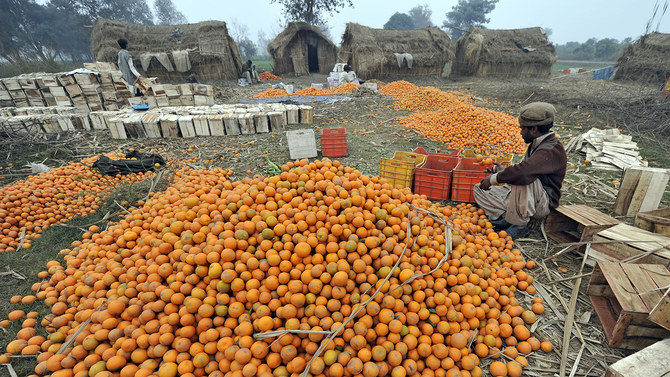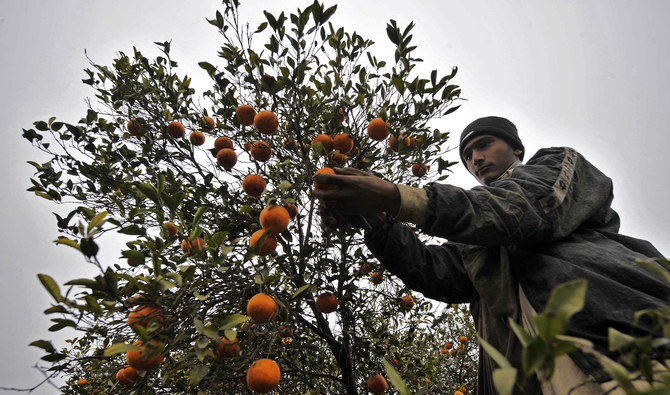KARACHI: Pakistan has earned a sizeable revenue of $253 million by exporting 460,000 tons of kinnow during the latest season, said a representative of the business community involved in the trade on Saturday, adding that the country mainly benefited from the robust demand for the fruit in the Middle Eastern markets.
Initially, Pakistani traders had set an export target of 350,000 tons of the fruit with an expected earning of $210 million, but they ended up shipping the highest ever export volume in the country’s history toward the end of the 2020-21 season.
“The demand for kinnow underwent a significant surge across the world due to the COVID-19 pandemic since citrus fruits play a vital role in strengthening our immunity system and protect us from deadly diseases,” Waheed Ahmed, patron-in-chief of the All Pakistan Exporters, Importers and Merchants Association, said.
During the export season that concluded in April 2021, Pakistan’s international kinnow sales surged by 30 percent as compared to the preceding period when it sold 353,000 tons.
According to the exporters of the fruit, the country’s aromatic kinnow sold quite well in the Middle East where its export grew by 29 percent due to its unique flavor.

This file photo shows a Pakistani worker sorting kinnow (mandarin oranges) at an orchard in the agricultural town of Bhalwal on Jan. 18, 2010. (AFP/File)
Pakistan exported about 43,998 tons of kinnow to the United Arab Emirates which was 38 percent higher than its sales in the previous season.
The country’s export of the fruit to Saudi Arabia also increased by about 9 percent where it sold a quantum of about 21,970 tons.
Pakistan also shipped about 66,700 tons of kinnow to other gulf countries, including Oman, Qatar and Iraq.
“Due to the commendable efforts and extensive assistance of the government, the country managed to export a much greater volume of the fruit than anticipated,” Ahmed said.
However, he added that individual Pakistani exporters sustained huge financial losses despite selling more kinnow due to the dollar-rupee exchange rate fluctuations.
“The export orders materialized when the exchange rate stood at Rs168,” he said. “By the time the payments were made, the Pakistani rupee had acquired greater stability and the exchange rate was at Rs153.”
He also thought that the commodity did not get its fair price in the international market since the freight cost disproportionately increased due to international lockdowns, and local exporters suffered their highest losses in the Russian market.
















